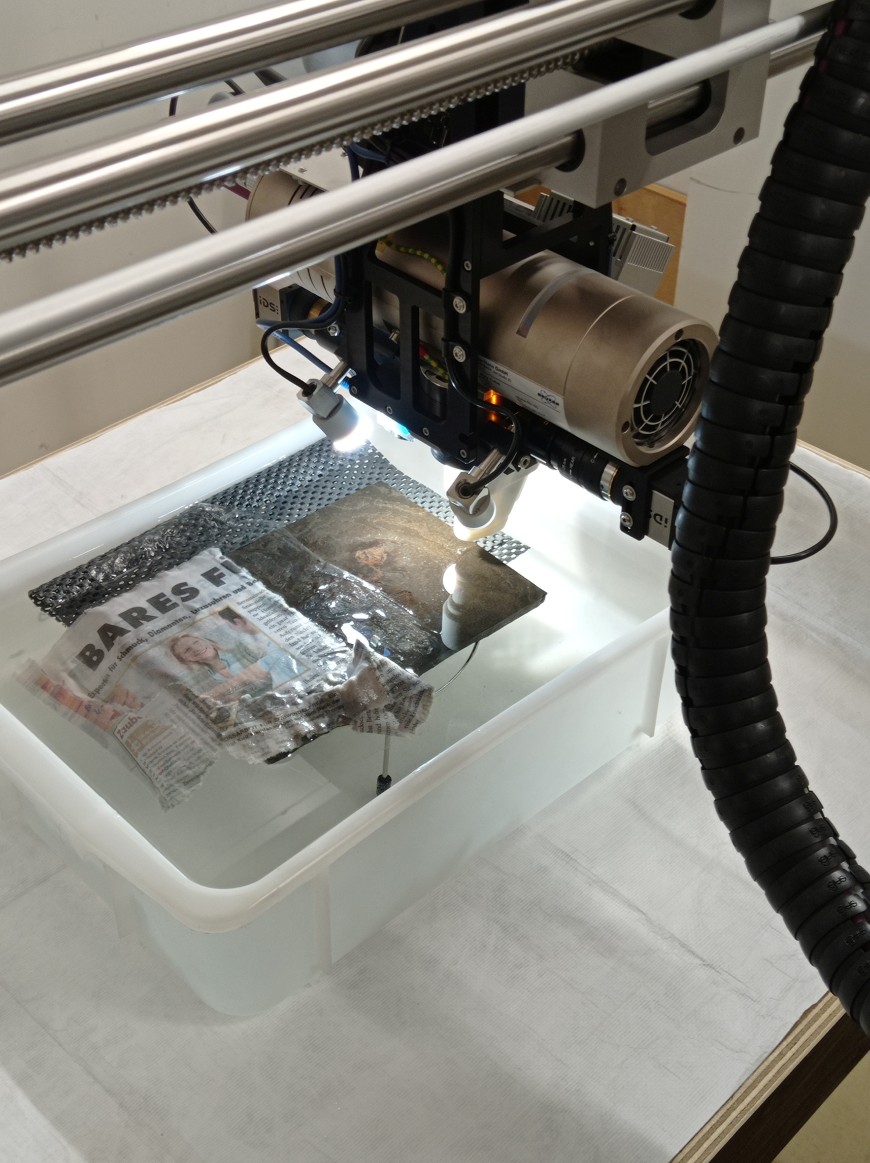Messel fossils under X-rays: a new tool to illuminate the anatomy of fossils in museum and research collections
2025/04/15 by M. Schmitt/M. Colombo
An international team of scientists, involving TU Darmstadt Marco Colombo and Prof. Wolfgang Ensinger, has applied for the first-time mobile macroscopic scanning X-ray fluorescence analysis (mobile-MA-XRF) with sophisticated data analysis to examine paleontological objects. These are fossils from the Messel Pit, Germany's first UNESCO World Heritage Site near Frankfurt, Germany. The pioneering study opens up a new avenue for studying in detail the elemental chemistry of fossils conserved in both solid and liquid media in research and museum collections worldwide.

The study, published in the Journal of Analytical Atomic Spectrometry, is led by Marco Colombo and his supervisor Prof. Wolfgang Ensinger from the Institute of Materials Science, Materials Analysis Department, in collaboration with paleontologists Dr Valentina Rossi and Dr Thomas Lehmann, from University College Cork and Senckenberg Research Institute and Natural History Museum Frankfurt, respectively.
Mr. Colombo explains, “A big challenge to study cultural heritage objects, from historical artifacts to fossils, relates to their unique and often fragile nature. As scientists, we strive to use and/or develop sophisticated non-destructive approaches to study such objects”.
Dr. Lehmann: “Messel is a world-famous fossiliferous site, where animals are exceptionally preserved, including their skin, fur, feathers, eyes and internal organs. These unique 47 million years old fossils need special care before being housed in museum collections: some, especially the larger ones, are transferred from the sediment to a resin plate, and others are kept in water or glycerin”.
The team used a powerful X-ray fluorescence spectrometer that has been acquired in the framework of a collaboration between the Technical University of Darmstadt and the Städel Museum, the Goethe University, as well as the Senckenberg Research Institute in Frankfurt, with the financial support of the Dr. Rolf M. Schwiete Foundation. Such instruments are widely used to scan historical paintings, enabling among other the discovery of preliminary sketches, artistic techniques or even forgeries. “Large and heavy fossils and those conserved in water or glycerin are difficult to study without removing the soft tissues from the specimens (i.e., destructive sampling). The use of large X-ray machines allows us to analyze these fossils safely, by positioning them on a table and scanning their chemical composition”, explains Mr. Colombo “Material analysis not only serves to characterize high-tech materials currently under development, but also provides valuable clues for understanding the evolution of life on Earth” says Prof. Ensinger.
The team discovered striking chemical signals associated with fur, feathers and internal organs in nearly all of the analyzed fossils. This also demonstrates that all conservation methods used on the Messel fossils so far enable the preservation of their chemical composition.
"The application of cutting-edge technologies to fossil analyses can reveal previously inaccessible information, marking a significant advancement in palaeontology. This approach is crucial for expanding our understanding of ancient life and ecosystems. The association between chemical elements and soft tissues is critical for our understanding of fossil preservation, but also more importantly we can use chemical signals in fossils to reconstruct their biology and ecology.”
Valentina Rossi, University College Cork
Application of mobile-macroscale scanning X-ray fluorescence (mobile-MA-XRF) imaging in paleontology: analyses of vertebrate fossil specimens from Messel conserved in different solid and liquid media Marco Colombo, Thomas Lehmann, Wolfgang Ensinger and Valentina Rossi, J. Anal. At. Spectrom., 2025, 40, 989




![Im Oktober 2021 bereitete das Team aus Materialwissenschaftler*innen und
Paläontolog*innen [von links nach rechts: V. Rossi (Uni Cork), M. Gerken (Städel Museum), M. Colombo und B. Thybusch (TU Darmstadt), T. Lehmann (Senckenberg)] die Messel Fossilien für die Scans vor.](/media/materialwissenschaften/responsive/news_und_veranstaltungen/fachgebiete_1/IMG_20211011_143533_kleiner_870x0.jpg)
![Im Oktober 2021 bereitete das Team aus Materialwissenschaftler*innen und
Paläontolog*innen [von links nach rechts: V. Rossi (Uni Cork), M. Gerken (Städel Museum), M. Colombo und B. Thybusch (TU Darmstadt), T. Lehmann (Senckenberg)] die Messel Fossilien für die Scans vor.](/media/materialwissenschaften/responsive/news_und_veranstaltungen/fachgebiete_1/IMG_20211011_143533_kleiner_475x0.jpg)
